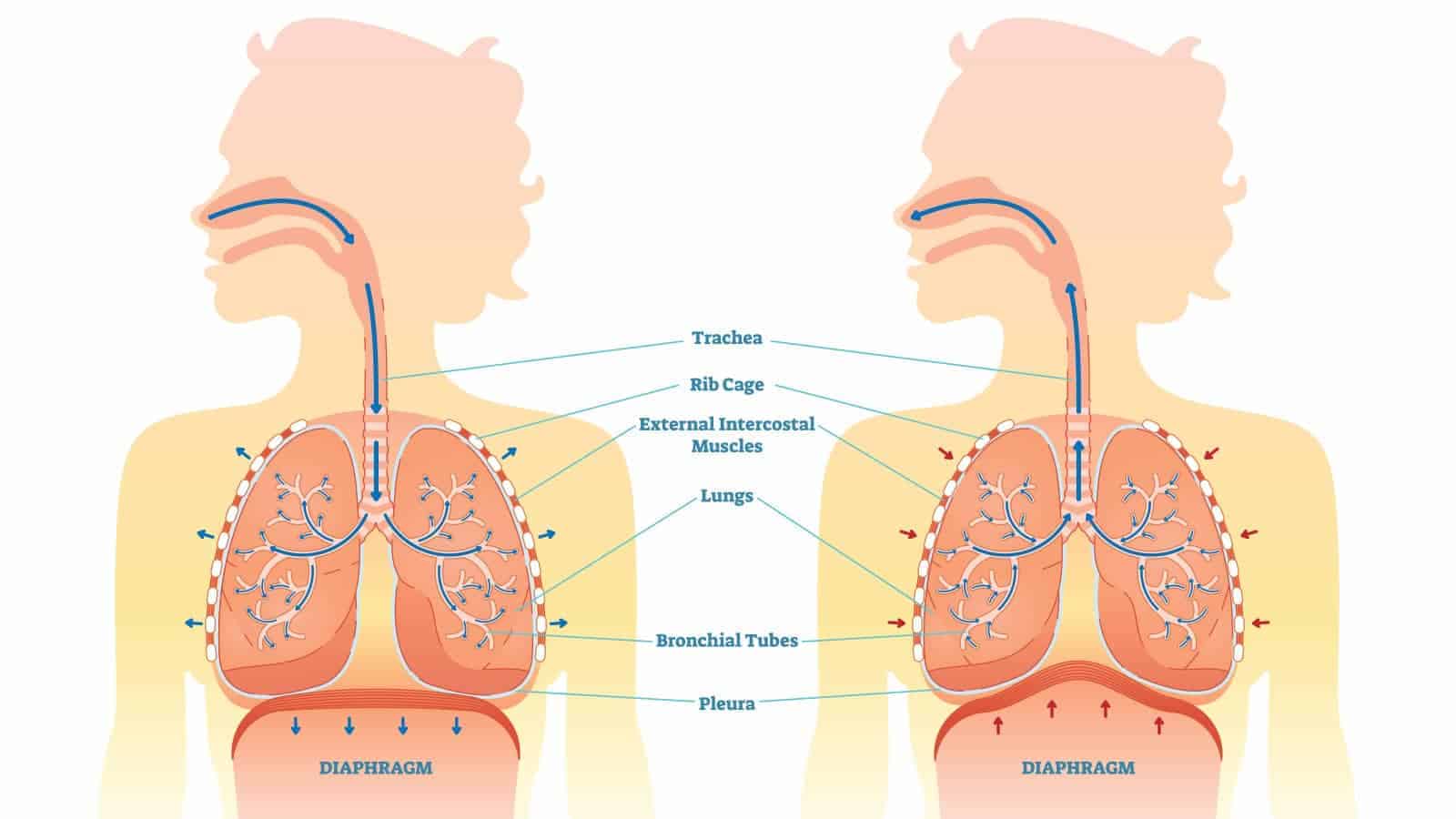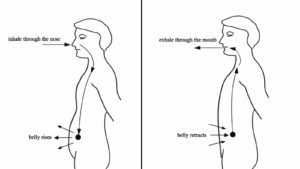In today’s fast-paced world, many people have forgotten the importance of breathing deeply. It might seem strange that we have forgotten how to do something so basic to our existence, but with stress at an all-time high globally, many people breathe very shallowly. This increases anxiety, blood pressure, heart rate, and puts the body in a near-constant fight-or-flight state.
Shallow breathing can even cause panic attacks due to hyperventilation. Unfortunately, many lifestyle factors and environmental triggers affect our breathing, but that’s why breathing techniques are so important. According to a press release by the American Psychological Association, everyone’s stress levels have risen, regardless of age, race, or demographics.
First of all, 59% of adults say this is the “lowest point in our nation’s history” that they can remember. Top stressors include the future of our nation, money, work, the current political environment, and safety concerns.
Though it seems many people have a bleaker outlook on life nowadays, that doesn’t mean we can’t do something to destress and center ourselves. Breathing techniques can help you manage stress better, which will allow you to have a better handle on the current problems our world faces.
Keeping this in mind, we’ll discuss breathing exercises that utilize pranayama, which is mentioned in the quote above, as the foundation of the techniques.
Also, just in case you’re wondering, science has shown that breathing techniques are not just a New Age idea rooted in pseudoscience. In fact, some studies have shown how breathing techniques can even help with weight loss!
Without further ado, let’s get to the techniques!
Here are 5 proven breathing techniques for stress and anxiety:
1. Alternate Nostril Breathing (Nadi Shodhana)
- Sit down in a comfortable area with your spine and head centered forward.
- Put your left hand face down on your lap, relaxing the muscles.
- Use your right hand to place your pointer and middle fingers between your eyebrows.
- Take a deep breath while closing your eyes, breathing only through the nose. Inhale and exhale for 30 seconds.
- Now, close your left nostril with your left thumb and inhale slowly and evenly.
- After you inhale completely, hold it for a few seconds, then release.
- Repeat step 6, but this time make sure both nostrils are closed by closing your right nostril with your right ring finger.
- Hold for a few seconds, then exhale and release.
- Now, repeat step 5, but this time close your right nostril only. (The breathing sequence should be: left nostril closed, both nostrils closed, right nostril closed, repeat). *In case you were wondering, you’ll have to breathe through your mouth when both nostrils are closed.
- Repeat for 5-10 cycles. Concentrate your mind solely on your breath for the best results.
2. Abdominal Roll (Uddiyana Bandha)
- Either stand or sit on a mat.
- Exhale completely, and then close the air passage in your throat to perform a “mock inhale” with your chest.
- Relax your abs and hold your breath. Attempt to inhale with your abs relaxed.
- Release the “mock inhalation” and allow the abs and chest to relax. Exhale and then repeat for 3-5 cycles.
3. Diaphragmatic Breathing
- You can either sit or lie on your back for this breathing technique.
- Place your hands above your diaphragm.
- Now, slowly inhale through your nose and feel your stomach start to expand.
- Exhale as if you’re blowing out a candle.
- Practice these breathing techniques for 5 or 10 minutes. Make sure you pay attention to your breath and remember to breathe deeply and slowly.
This is one of the breathing techniques that you can practice anywhere, anytime. You can be in your car on the way home from work or working at your desk to practice breathing better; the point is just to practice often and try to focus only on your breath. This will help you relax and decrease anxiety.
4. The “Bellow” Breath (Bhastrika Pranayama)
- Sit on a mat or chair with your palms relaxed on your knees. Your head and spine should be centered forward.
- Relax your stomach muscles and close your eyes.
- Inhale and exhale forcefully, but comfortably. You want to make sure your breath is swift but rhythmic.
- Repeat for 5 minutes.
5. The “Humming Bee” Breath (Bhramari Pranayama)
- Sit in a relaxed position on a mat with your legs crossed. With your palms resting on your knees, relax your spine and shoulders. As usual, make sure your spine and head are facing forward.
- Close your ears with the thumbs while keeping your index fingers on your forehead. Use your middle and ring fingers to close your eyes.
- Keep your mouth closed and slowly inhale and exhale. Hum with your throat on the exhale and pay attention to the vibration this movement creates. This is where this breathing technique gets its name.
- Continue step 3 for several cycles and then return to step 1. Repeat for 5-10 cycles.
These breathing techniques are wonderful for reducing stress and anxiety, but we have a couple more to share with you as a bonus!
More Breathing Techniques
Traditional Deep Breathing
- Sit on a chair or mat and keep your spine straightened. Relax your shoulders and try to release tension from your body.
- Close your eyes and breathe normally for one minute. During this time, try to relax your body even further.
- Inhale deeply and exhale to the count of four. Pull your navel in as if you’re trying to connect it with your spine.
- Continue the exercise for 5 to 10 minutes.
This is one of the easiest breathing techniques to practice and is perfect for a beginner. If you’re new to breathing exercises, you should start with traditional deep breathing.
The “Stomach Vacuum”
- Lie down on a mat with your knees bent and feet flat on the floor. Keep your hands at your sides with your palms face down.
- Inhale deeply and exhale as much as you can. It might help to imagine connecting your navel with your spine.
- Hold this breath for 20 seconds.
- Release it by inhaling through the nose and exhaling through the mouth. Repeat 5 times.
The 4-7-8 (or Relaxing Breath) Exercise
Invented by Dr. Andrew Weil, the 4-7-8 breathing technique is one of the simplest breathing exercises out there. It’s based on the ancient yogic technique we mentioned above, pranayama. Although you can practice these breathing techniques anywhere, begin your practice sitting up with your back straight.
- To begin, put the tip of your tongue against the tissue just behind your front teeth and keep it there throughout the exercise.
- Exhale through your mouth around your tongue, making a whooshing sound.
- Then, close your mouth and inhale through your nose to a count of four.
- Next, hold your breath for a count of seven.
- Finally, exhale through your mouth to a count of eight, making a whooshing sound on the out breath.
- This counts as one breath. Repeat three more times.
You might have trouble holding your breath or exhaling in the beginning, so just go at a pace that’s comfortable for you but remember to keep the 4:7:8 ratio. That’s the most important part of the exercise, anyway.
This exercise acts as a natural tranquilizer for our overtaxed nervous systems. If you want an alternative to pharmaceutical drugs for your anxiety or stress, the effectiveness of this breathing exercise cannot be overstated. Practice four breaths twice per day in the beginning, and then add more as needed. Think of this as a medicine you can take as often as you need without fear of overdosing.
Final thoughts on Breathing Techniques to Reduce Anxiety
We hope you have gained some valuable information on breathing techniques for stress and anxiety. As we discussed, there are a variety of breathing exercises available to reduce stress. You can practice the abdominal roll, alternate nostril breathing, stomach vacuum, diaphragmatic breathing, “bellow” breath, humming bee breath, traditional deep breathing, or 4-7-8 breathing. Choose whichever one works best for you, but remember that for beginners, the traditional or 4-7-8 breathing techniques will likely serve you the best.
The best part is, you can practice these techniques anytime you feel anxious or stressed. You can also use them as a tool to help you get a better night’s sleep and fall asleep faster. You can utilize them to destress before a presentation at school or work or during any part of your day where you feel stress building.
The anxiety you deal with might seem debilitating or all-encompassing, but don’t feel helpless. The tools listed above are very powerful healing methods that are totally free and easily accessible. The power of the human mind and body to heal itself is nothing short of amazing, and breathing techniques are the perfect way to demonstrate this fact.
https://www.youtube.com/watch?v=lFdcCXmGpy4













 Community
Community

